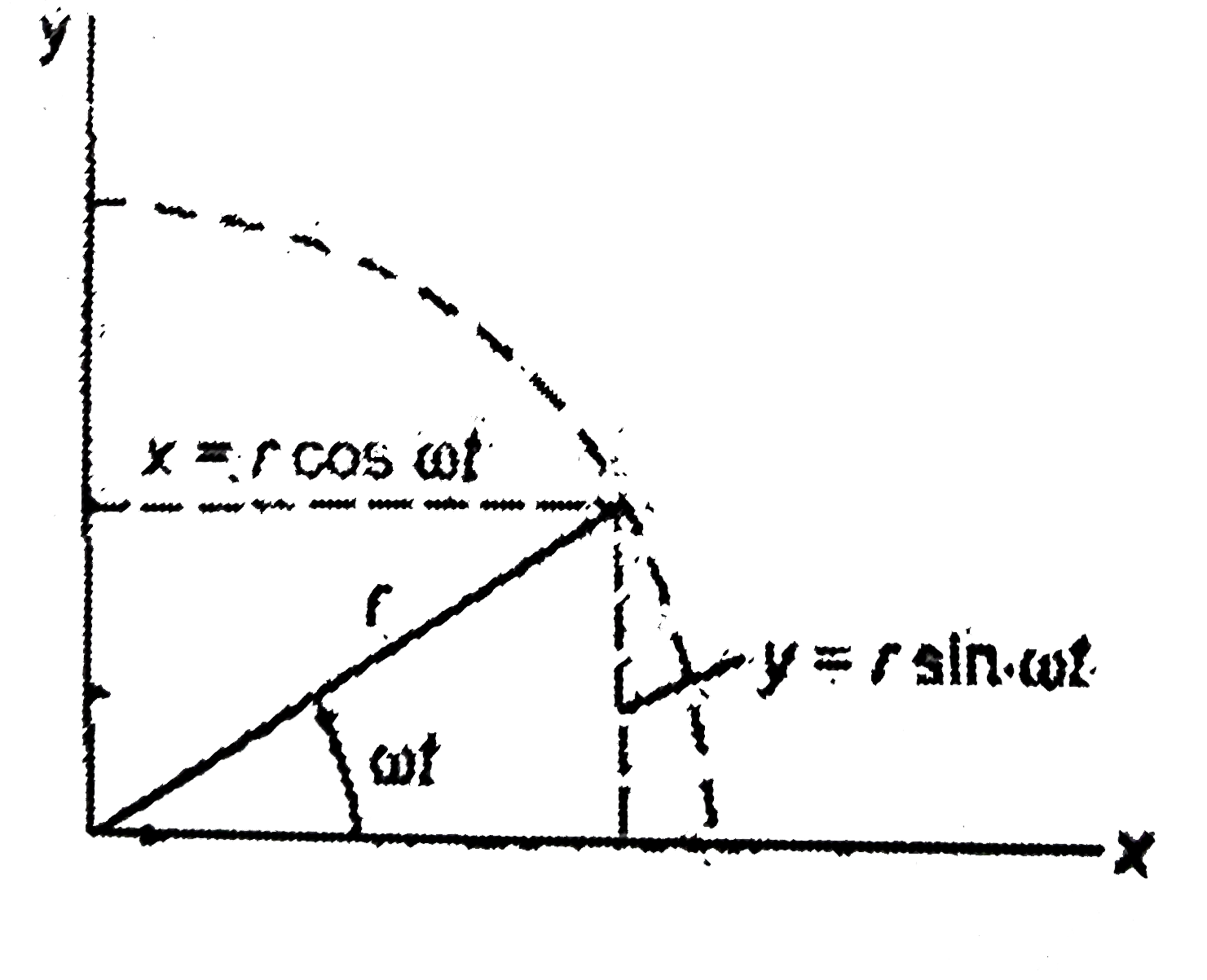The position vector of the particle is r(t)=acosωtˆi+asinωtˆj, where a and ω are real constants of suitable dimensions. The acceleration is
perpendlcular to the velocity
parallel to the velocity
direction away from the origin
perpendicular to the position vector
The correct Answer is:A
Given that, r(t)=acosωtˆi+asinωtˆj
∵v=dr(t)dt=−aωsinωtˆi+aωcosωtˆj
a=dvdt=−aω2cosωtˆi−aω2sinωtˆj
∵a.v=(−aωsinωtˆi+aωcosωtˆj)(−aω2cosωtˆi−aω2sinωtˆj)
a.v=a2ω3sinωtcosωt−a2ω3sinωtcosωt
⇒a.v=0[∵a.v|a||v|cosθ]
Above result implies that acceleration is perpendicular to velocity
Similar Questions
The position vector of the particle is r(t)=acosωtˆi+asinωtˆj, where a and ω are real constants of suitable dimensions. The acceleration is
View SolutionThe position vector of a particle is given by →r=kcosωˆi+ksinωˆj=xˆi+yˆj, where k and ω are constants and t time. Find the angle between the position vector and the velocity vector. Also determine the trajectory of the particle.
View Solution
Knowledge Check
Consider a particle moving in the x−y plane according to r=r(cosωtˆi+sinωtˆj), where r and ω are constants. Find the trajectory, the velocity, and the acceleration.
 APerpendicular to the velocityBParallel to the velocityCDirected away from the originDPerpendicular to the position vector
APerpendicular to the velocityBParallel to the velocityCDirected away from the originDPerpendicular to the position vectorThe position vector of a particle is →r=acosωti+asinωtj, the velocity of the particle is
Aparallel to the position vectorBperpendicular to the position vectorCdirected towards the originDdirected away from the originThe position vector of a particle is r=asinωtˆi+acosωtˆj
The velocity of the particle isAparallel to position vecorBperpendicular to position vectorCdirected towards originDdirected awa from the origin
The position vector of a particle is r=asinωtˆi+acosωtˆj
The velocity of the particle is
View SolutionConsider a particle moving in the x−y plane according to r=r(cosωtˆi+sinωtˆj), where r and ω are constants. Find the trajectory, the velocity, and the acceleration.

View SolutionThe position vector of a particle at time t is given by →r=2tˆi+5tˆj+4sinωtˆk where ω is a constant.Answer the following questions
Acceleration of the particle is
View SolutionPosition of a particle varies as y=cos2ωt−sin2ωt. It is
View SolutionPosition vector of a particle moving in x−y plane at time t is r=a(1−cosωt)ˆi+asinωtˆj. The path of the particle is
View Solution
